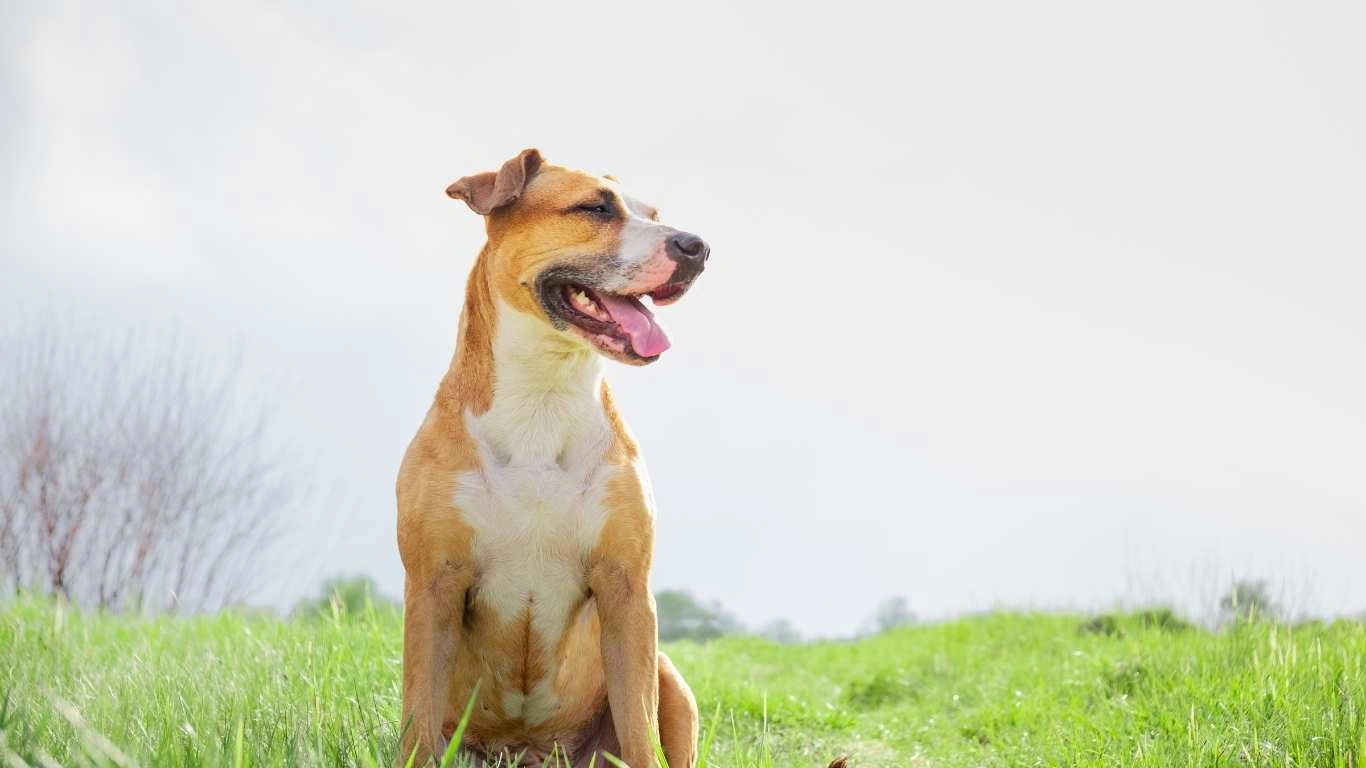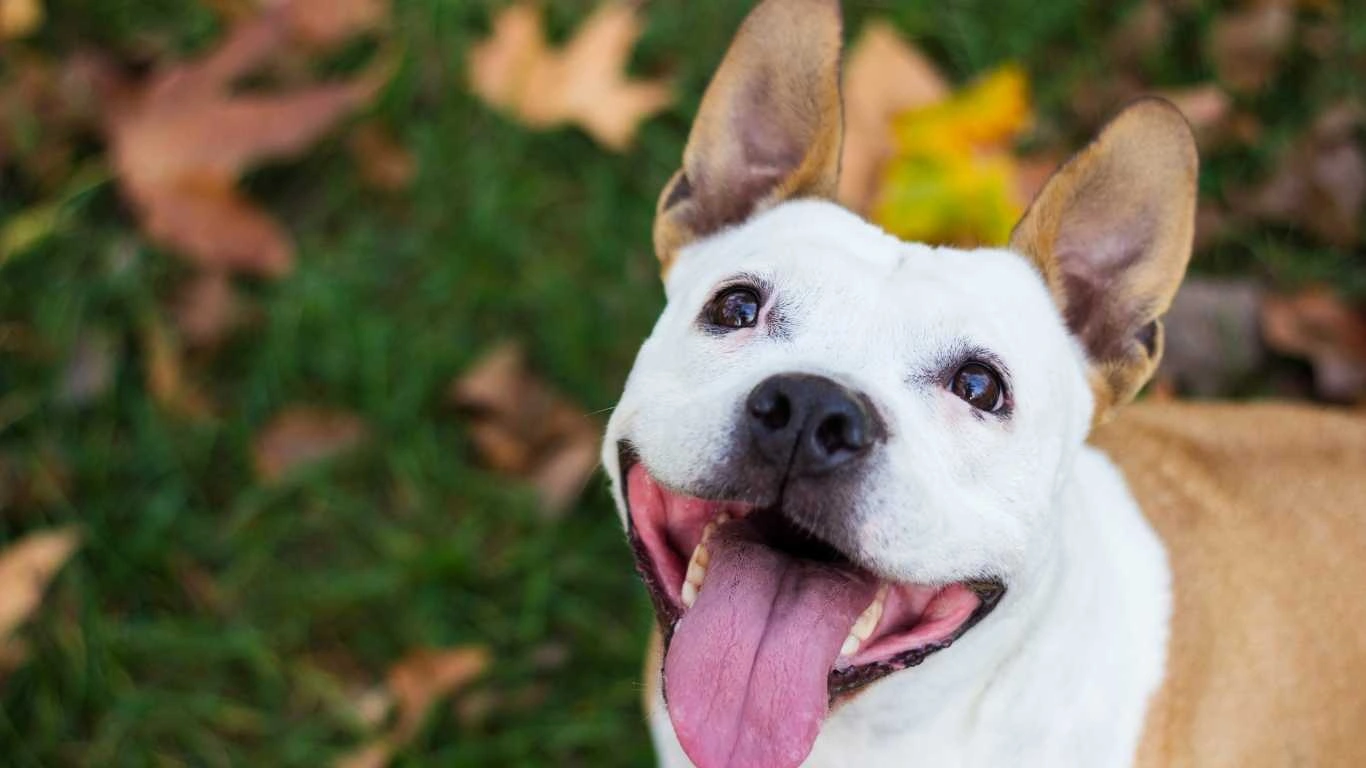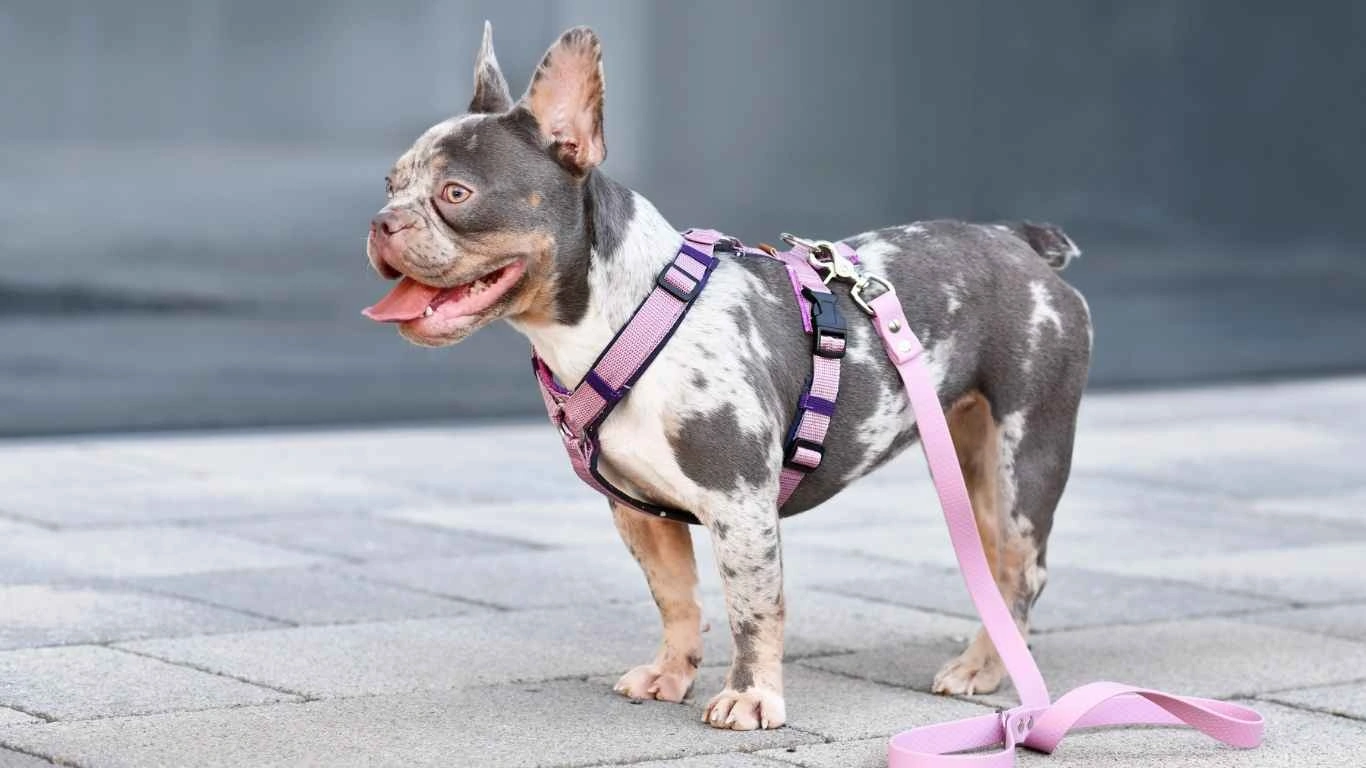Best Diet for Dogs with Gluten Intolerance: Vet-Backed & Safe Picks
If you’ve ever found yourself staring at the back of a dog food bag, scratching your head, trying to figure out what half those ingredients even mean, you’re not alone. As someone who’s spent a big chunk of their career working in animal shelters and pet clinics, I’ve seen firsthand how tricky it can be to find the best diet for dogs with gluten intolerance. It’s not just about slapping a “grain-free” label on a bag and calling it a day. Nope — there’s a lot more to it. I’ve worked with dozens of pups who came through the clinic doors with skin issues, tummy troubles, and even chronic ear infections, only to discover that gluten was the sneaky culprit.
What Even Is Gluten Intolerance in Dogs, Anyway?

Let’s break it down in plain speak. Gluten is a protein found in wheat, barley, and rye. Some dogs can eat those grains all day and be just fine — others? Not so much. When a gluten-intolerant dog eats kibble with wheat fillers, their immune system might treat gluten like a threat. This can lead to a variety of reactions — and not the good kind. I’m talking itchy skin, ear infections that keep coming back, gas that’ll clear a room, and chronic diarrhea. It’s heartbreaking to see, especially when the fix is often so simple: change the diet.
Signs Your Dog Might Be Sensitive to Gluten

In the shelter, we’d sometimes take in dogs that looked perfectly healthy on the outside. But once they settled in and started eating our standard kibble, their symptoms would show up fast. I’ve lost count of the number of dogs I’ve seen start scratching like crazy, biting at their paws, or having messy poops — all because of what was in their food bowl.
Common Symptoms of Gluten Sensitivity:
- Itchy, red, or inflamed skin (especially around the paws, face, and ears)
- Frequent ear infections
- Chronic digestive issues like bloating, gas, or diarrhea
- Lethargy or low energy
- Unexplained weight loss or poor coat quality
Of course, these symptoms can point to other issues too, like flea allergies or other food sensitivities. But gluten intolerance is surprisingly common — more than most folks think. When in doubt, always talk to your vet. Trust me, a simple diet switch can make all the difference. I’ve seen it transform dogs from miserable to thriving in just a few weeks.
Why the “Grain-Free” Label Doesn’t Always Mean Gluten-Free

One thing that used to trip up a lot of pet parents at the clinic — and honestly, even some staff who were new — was the difference between grain-free and gluten-free. They sound like they should mean the same thing, right? Not exactly.
Grain-free foods might skip wheat and barley, but they often use ingredients like corn, rice, or oats. Some of these may still contain trace amounts of gluten, depending on how they’re processed. So if your dog has a true gluten intolerance (as in, they can’t handle any gluten at all), just going grain-free might not cut it.
Pro Tip From the Clinic Floor:
Always read the ingredient list. Don’t rely on flashy labels. Look out for terms like:
- Wheat – Common filler, very high in gluten.
- Barley – Another sneaky gluten-containing grain.
- Rye – Less common in dog food, but still a source of gluten.
- Brewer’s yeast – While not technically gluten, some dogs react similarly.
And if you’re ever unsure? I always tell folks, snap a pic of the ingredients and bring it to your vet or a nutrition-savvy tech (we LOVE helping decode labels). Honestly, we get kind of nerdy about it.
Ingredients That Work Wonders in a Gluten-Free Diet
So now that we’ve talked about what to avoid, let’s get into the good stuff — the ingredients that tend to agree with gluten-sensitive pups. Over the years, I’ve had the best luck with formulas that use novel proteins and simple, clean carbs. These are some of the ones that I’d personally recommend based on what I’ve seen work in clinic and shelter settings:
Safe Protein Options:
- Salmon – Great for skin and coat, easy to digest.
- Turkey – Lean, mild, and less likely to trigger allergies.
- Lamb – Often used in limited ingredient diets.
- Duck or Rabbit – Good for pups with multiple sensitivities.
Healthy Carb Alternatives:
- Sweet potatoes – Packed with fiber and nutrients.
- Chickpeas – Great source of protein and carbs.
- Lentils – Easy to digest and full of iron.
- Peas – Common in many gluten-free dog foods (though some brands are phasing them out due to DCM concerns).
I’ve seen dogs turn completely around after switching to diets based on these ingredients. One lab mix we had at the shelter — Rosie — had constant itchy paws and recurring ear infections. Once we transitioned her to a lamb and chickpea-based formula, her symptoms started fading within two weeks. It was amazing to watch her go from miserable to tail-wagging happy with just a food change.
Homemade vs Store-Bought: Which Gluten-Free Route Is Right for Your Pup?

Now, here’s a hot topic I’ve gone back and forth on with more pet parents than I can count — should you make your own gluten-free dog food, or stick to the commercial stuff? And the honest answer is… it depends. I’ve worked with families who swear by their homemade recipes and have dogs thriving on them. But I’ve also seen people unintentionally miss key nutrients, thinking chicken and rice was enough (spoiler: it’s not).
Let’s Talk Pros and Cons:
Homemade Gluten-Free Diets:
- Pros: Total control over every ingredient. Great for dogs with multiple allergies. You know exactly what’s going into the bowl.
- Cons: Time-consuming. Risk of nutrient imbalance if not done correctly. Often requires supplements.
Store-Bought Gluten-Free Dog Food:
- Pros: Convenient. Many formulas are backed by veterinary nutritionists. Complete and balanced.
- Cons: Can be pricey. Labels can be misleading. Some brands use low-quality fillers.
If you’re going the homemade route, I highly recommend working with a vet or pet nutritionist. Back in the clinic, we used to collaborate with local pet parents and formulate custom recipes — you wouldn’t believe the difference it made, especially for those poor itchy pups who just couldn’t handle commercial food.
Best Commercial Gluten-Free Dog Food Brands (That I’ve Actually Seen Work)

Alright, let’s get into some specifics. I’ve had hands-on experience with dogs who’ve thrived on these brands — not just read reviews online. These are products I’ve personally seen used in shelters, clinics, and even recommended to friends and family.
Top Picks for Dogs with Gluten Intolerance:
- Natural Balance L.I.D. (Limited Ingredient Diets) – These formulas are clean, simple, and avoid common allergens like wheat, soy, and corn. They’ve got duck and potato, salmon and sweet potato, and even bison options.
- Wellness Simple – This line was a go-to for us when working with dogs who had serious gut issues. It’s gentle, gluten-free, and easy to digest.
- Canidae PURE – Great for sensitive stomachs. They keep it minimal — just 8–10 ingredients per recipe. I’ve seen it clear up skin issues fast.
- Ziwi Peak Air-Dried – Premium stuff, but worth it if your pup needs something ultra digestible and nutrient-rich. Think raw benefits, minus the prep.
These brands aren’t just “trendy.” They’re backed by years of consistent results. I remember this senior German Shepherd, Max, who came in covered in hot spots and with ears so infected they smelled terrible. His family switched him to Wellness Simple Salmon & Potato, and within a month, he looked like a different dog. His ears cleared, he was playful again — like night and day.
Supplements That Support a Gluten-Free Lifestyle

Even if you’ve nailed the best diet for dogs with gluten intolerance, sometimes a few smart supplements can really round things out. In the clinic, we often paired gluten-free diets with targeted support — especially for dogs who were recovering from long-term inflammation or poor gut health.
What to Consider Adding:
- Probiotics – Helps restore healthy gut flora after gluten-related digestive issues.
- Omega-3 fatty acids – From fish oil or flaxseed. Reduces inflammation and supports skin/coat health.
- Digestive enzymes – Useful for dogs that have trouble breaking down food, even after switching diets.
- Multivitamin formulated for dogs – Especially important if feeding homemade diets.
I always tell clients: keep it simple, and don’t go overboard. One of our patients, a Cocker Spaniel named Bailey, did great on a limited-ingredient lamb kibble — but once her owner added a probiotic and a fish oil capsule, her skin issues cleared up twice as fast.
How to Transition to a Gluten-Free Diet Without Upsetting Your Dog’s Stomach
If there’s one golden rule from my shelter days, it’s this: don’t switch dog food cold turkey. Unless your vet says otherwise (like in a true allergy emergency), always ease into a new diet over 7–10 days. Dogs’ guts are sensitive, especially if they’ve been reacting to gluten.
Here’s the Transition Schedule I Recommend:
- Days 1–2: 25% new food, 75% old food
- Days 3–4: 50% new, 50% old
- Days 5–6: 75% new, 25% old
- Days 7+: 100% new food
Some dogs adjust right away, others need a little time. If you notice soft stool, don’t panic — it’s often temporary. But if symptoms like vomiting or lethargy kick in, stop and check with your vet. Better safe than sorry.
Also, a quick note from experience — watch those sneaky treats. You might be feeding the best gluten-free food on the market, but if your pup’s getting gluten-loaded snacks from neighbors or well-meaning family, all your hard work could go out the window. (True story: one dog we had was doing great until we realized a volunteer was sneaking him Milk-Bones!)
Reading Labels Like a Pro: What to Watch Out for in Dog Food

If there’s one habit I picked up quickly working in the clinic, it’s label-reading. And trust me, those dog food packages can be sneakier than a treat-thieving terrier. When it comes to finding the best diet for dogs with gluten intolerance, you’ve got to get familiar with the fine print. A bold “grain-free” sticker might be front and center, but a closer look might still reveal barley, brewer’s rice, or even hidden wheat derivatives.
One trick I always shared with clients: look at the first five ingredients. These make up the bulk of the formula. If you spot anything like “wheat flour,” “wheat middlings,” or “hydrolyzed wheat protein,” that’s a no-go for a gluten-sensitive pup. Even vague stuff like “meat meal” can be suspect if the source isn’t specified — it could include trace gluten from processing.
Terms That Should Raise a Red Flag:
- Wheat gluten – Obvious, but it still pops up in some foods labeled “natural.”
- Modified food starch – Unless specified as tapioca or potato-based, this can be gluten-containing.
- Artificial flavors or colorings – These don’t always contain gluten, but they can trigger other sensitivities.
- “By-products” – Not always bad, but vague and can vary in quality — transparency matters.
One of my favorite tips is to actually check the brand’s website or call the manufacturer. Good companies will tell you where their ingredients come from. I once had a pet parent call Merrick about their salmon formula — the rep not only confirmed it was gluten-free but emailed her a breakdown of all the sourcing. Now *that’s* customer service.
Feeding Tips for Dogs with Gluten Sensitivity (Real-Life Hacks)

Okay, let’s talk real-world application. Choosing the right food is huge, but how you feed it matters, too — especially for dogs with sensitive stomachs. Over the years, I’ve picked up a few tricks from trial, error, and yes, cleaning up way too many messes in the kennel.
Daily Feeding Tips That Actually Work:
- Stick to a routine – Feed at the same times each day. It helps with digestion and reduces begging behaviors.
- Use a slow feeder – For gulpers, this can prevent vomiting and bloating. It also gives them mental stimulation.
- Break meals into two (or three) portions – Especially helpful for small dogs or seniors with sensitive guts.
- Limit treats and table scraps – Even a tiny piece of gluten-containing bread or cookie can cause a reaction.
- Keep a food journal – Jot down what they eat, how their stool looks, and any signs of discomfort. Patterns will jump out fast.
I’ll never forget this little beagle mix, Luna — she had such a delicate tummy. We finally found a food that worked, but her issues kept flaring up randomly. Turns out, her owner was giving her “just a nibble” of toast every morning. We cut that out and boom — no more digestive drama. Sometimes it’s the tiniest habits that need adjusting.
What to Do If You Suspect Gluten Sensitivity but Aren’t 100% Sure
Let’s be real — not every case is cut and dry. Some dogs show all the signs of gluten sensitivity, but without formal testing, it can be hard to confirm. In my experience, elimination diets are the gold standard when it comes to figuring things out. You cut out all potential triggers (including gluten), stick to a limited-ingredient formula, and slowly reintroduce foods one at a time.
This takes patience, and it’s way easier if you keep a clear record. When I guided a few clients through this process, we used charts and color-coded notes. Nerdy? Maybe. Effective? Absolutely.
Simple Elimination Diet Plan (Always Vet-Approved First!):
- Choose a single-protein, single-carb food (like lamb & rice or salmon & chickpea — gluten-free, of course).
- Feed only that for 8–12 weeks. No treats, table food, or supplements unless approved by your vet.
- If symptoms improve, begin introducing other ingredients one at a time, every 2 weeks.
And yes, this process can be frustrating. But it’s often the clearest way to identify food-related issues — including gluten intolerance. Better to take a few weeks now than keep your pup suffering unknowingly.
Resources Worth Bookmarking
If you’re diving deeper into canine nutrition — and especially if you’re managing food sensitivities like gluten intolerance — these are solid places to start. They’re science-backed and updated often:
- American Kennel Club (AKC) – Tons of great articles on dog health, nutrition, and allergies.
- PetMD – A go-to for vet-reviewed breakdowns of food-related symptoms.
- NIH – While not dog-specific, they’ve got solid info on gluten intolerance and immune reactions.
- Health.com – Helpful for crossover food sensitivity info (especially for humans managing pets with similar issues).
Disclaimer
This article is based on personal experience and professional observation in animal care environments such as pet clinics and shelters. It is intended for informational purposes only and should not replace veterinary advice. Always consult with a licensed veterinarian before making any significant changes to your dog’s diet, especially if they are showing signs of illness or discomfort.
Gluten intolerance in dogs is real, and with the right diet and guidance, your pup can live a comfortable, symptom-free life. You’ve got this — and your dog will thank you with every happy, tail-wagging meal.






